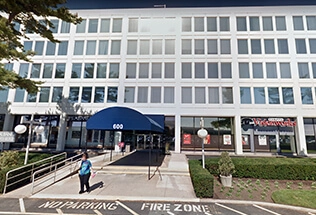“Burden of proof” is a guideline in the legal system that explains which party in a case needs to prove their story and to what degree of certainty. Significantly, there are multiple standards for the burden of proof and each applies to a different kind of court case.
The seasoned New York State personal injury attorneys at Schwartzapfel Lawyers are prepared to fight — and win! — for you. Call us now at 516-342-2200 for a free consultation and to learn how we can get you all the money and benefits you deserve.
What Is A Burden In Law?
In law, a burden refers to a difficult responsibility necessary for a court case. In court, people make claims and accusations against each other. At the end of the legal process, one side will likely be deemed the winner, and the other side is penalized. The amount of proof necessary to reach a conclusion is high because there are penalties and fines if someone is found to be guilty or liable.
To wit, the three (3) primary burdens in law are:
- The burden of proof
- The burden of persuasion
- The burden of production
In a legal action, the burden of proof refers to the ability to make a case that convinces a jury. The burden of persuasion refers to the degree of truth necessary in civil cases or criminal cases for a verdict to be reached. The burden of production refers to the responsibility to produce enough evidence to make your case credible. Grasping these distinctions is crucial for effectively presenting your case and making it compelling to the court.
What Does Burden Of Proof Mean?
At trial, the burden of proof refers to which side of a lawsuit has the responsibility or “onus” of proving that their story is true. Proof is the most important aspect of any court case. Whether the case is criminal or civil, the person making a claim needs to be prepared to support that claim with evidence.
There are several standards for burden of proof, and the type of proof required depends on the type of case being argued. Each standard sets a different level of certainty needed to establish the facts of the case.
Note: There is a much higher standard of proof in a criminal case because criminal penalties involve taking away people’s legal rights or freedoms. The standard of proof is a little more flexible in a civil case because civil case penalties are usually financial.
What Are The Different Types Of Burden Of Proof?
There may be cases where it’s extremely important that everyone is in complete agreement about someone’s guilt or liability. There are other cases where the stakes are not as high, and a different standard of proof can be used to make a decision. Accordingly, you may be held to one of these standards of proof if you have a court case coming up:
Preponderance Of The Evidence
Preponderance of the evidence means considering the likelihood that something actually happened. You’ll explain your side of the story in court, and the other side will explain their story. The trier of fact (that is, the judge or jury) will come to a decision based on what seems more than 50% likely. This standard of evidence is commonly used in personal injury lawsuits.
If you file a personal injury lawsuit with the help of a skilled attorney, it’s likely you will succeed in your claim if you provide sufficient evidence to support your account of what happened. That said, it is generally acceptable if there remains a slight possibility that the individual or company subject to the civil lawsuit is being truthful about some aspects of the situation because the preponderance of the evidence standard works on probability.
To learn more now, call Schwartzapfel Lawyers at 516-342-2200 or schedule your free consultation online today.
Beyond A Reasonable Doubt
Guilt beyond a reasonable doubt requires the highest legal standard of evidence. This standard is one of the most important parts of criminal law and is only used for criminal prosecutions.
If there is any reasonable question surrounding the defendant’s guilt, however small, the defendant cannot be found guilty. Accordingly, the prosecution must produce sufficient evidence to prove their case beyond a reasonable doubt.
Clear And Convincing Evidence
Clear and convincing evidence is a step between preponderance of the evidence and proof beyond a reasonable doubt.
With clear and convincing evidence, the triers of fact need to feel reasonably certain about the facts. As such, there can be little room for doubt or skepticism as long as everyone feels reasonably certain that they’ve interpreted the facts correctly.
What Is The Burden of Proof In A Civil Case?
As a standard, a civil case can employ either the preponderance of the evidence or clear and convincing evidence method. Here, preponderance of the evidence is the more common standard of evidence in civil litigation. The preponderance standard is commonly seen in small claims court, personal injury law, and workplace-related lawsuits.
Clear and convincing evidence is commonly used for civil cases that involve an individual who is deceased, like wills, probate, or withdrawing life support. The deceased person is obviously unable to provide evidence or testimony on their own behalf, which is why the burden of proof is raised to a much higher standard.
Note: The clear and convincing evidence standard can also be used for issues like real estate contract disputes or serious accusations in family law.
The majority of personal injury law cases use preponderance of the evidence. With over (150) years of combined experience, the seasoned New York City personal injury attorneys at Schwartzapfel Lawyers have a stellar track record of successfully meeting the preponderance of evidence standard. For a free consultation and/or case evaluation, call us now at 516-342-2200 or schedule with us online today!
What Types Of Evidence Do Civil Cases Use?
The types of evidence civil cases use can vary depending on the nature of the claim. As such, it’s generally best to assume that the more evidence you have, the stronger your case will be. Your skilled lawyer will review any and all supporting evidence you have for your claim and help you determine which pieces of evidence are the strongest.
Photographic Or Video Evidence
Visual evidence, like photographs or videos, helps a jury understand exactly what’s being described to them. You can describe something like a dangerous workplace condition or the site where an accident took place, but nothing will be as accurate as a real-life visual depiction of the scene you’re describing.
Photographs and videos can also help to accurately represent the scope of your injuries following an accident. Medical records often use terms like “laceration” or “contusion,” but it can be challenging for a jury to imagine the situation and understand your pain without seeing the actual injuries.
Medical Records
Medical records are among the most important kinds of proof you have regarding when your injuries occurred, the extent of your injuries, and how those injuries may continue to impact you throughout your life. In point of fact, medical bills prove the approximate cost of your treatment, which you’re entitled to seek as part of your personal injury lawsuit.
Communications
Text messages, emails, and physical letters you exchanged with the offending party about the incident serve as a record that you’ve communicated with them about the incident.
Communications are especially important if they prove that the offending party was aware of a problem, if they attempted to dissuade you from seeking medical treatment, or if they threatened to retaliate against you for pursuing a case.
Witness Testimony
People who saw the event occur or people who were aware of a risk factor that caused an event to occur can provide witness testimony in a civil case. Anyone with firsthand knowledge of the events in question can provide support to your case by explaining what happened or discussing issues they knew about.
Expert Testimony
Someone like a worksite safety expert can provide testimony regarding risk factors or dangerous conditions in your workplace that your employer should have known were significant. An expert’s knowledge can be used to prove negligence.
Are You Ready To File A Civil Case?
You need a legal team with the knowledge and resources to satisfy the burden of proof in your civil suit. When you’re ready to file a civil suit, we’re ready to help.
The team of seasoned New York State attorneys at Schwartzapfel Lawyers is ready and able to fight to get you all the money and benefits you’re entitled to. Call us now at 516-342-2200 for a free consultation to review the details of your case.
Your window to file a claim and recover all that you deserve may soon close forever. To keep that from happening, please don’t wait until it’s too late. Instead, act now and have Schwartzapfel Lawyers fight — and win! — for you.
DISCLAIMER: Nothing on this page should be considered legal advice. You should seek the appropriate counsel your situation requires. For more information, call 516-342-2200 now!
Sources:
Schwartzapfel Lawyers, P.C. | Fighting For You
2.4: The Burden of Proof – Social Sci LibreTexts | Substantive Criminal Law
eCFR :: 2 CFR 180.990 — Preponderance of the evidence | Code of Federal Regulations


















